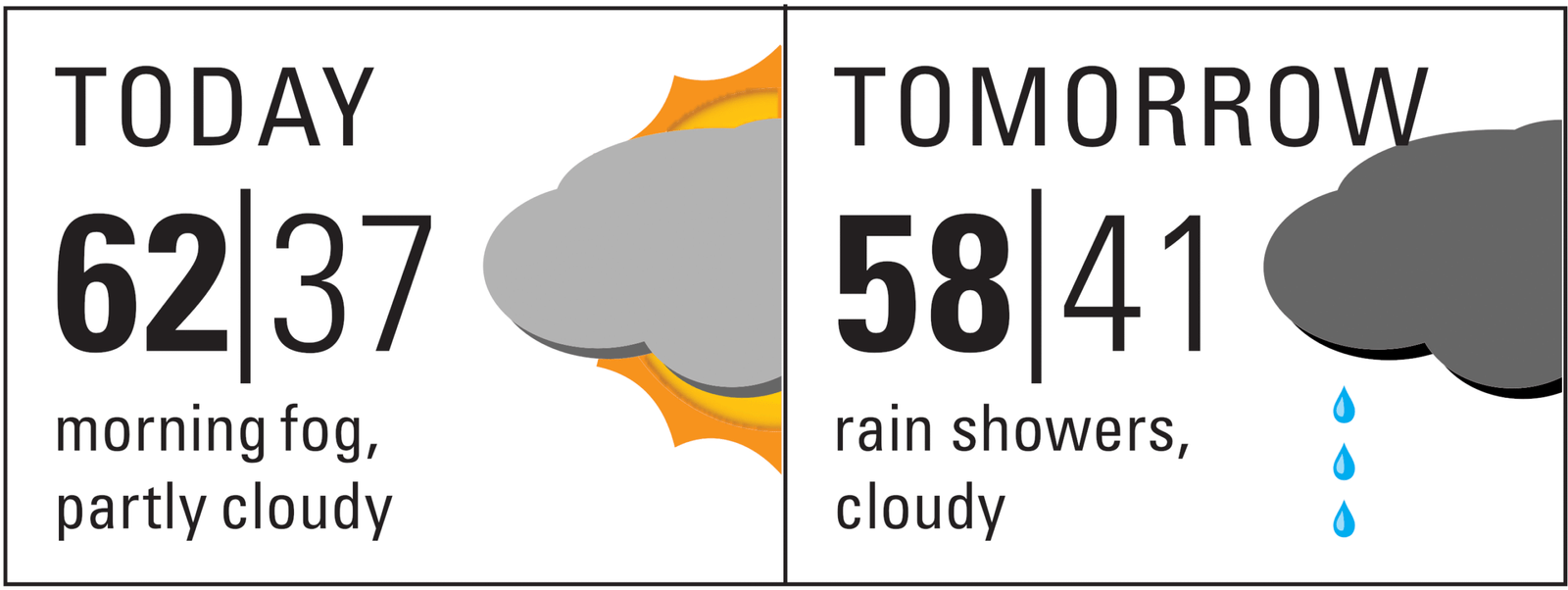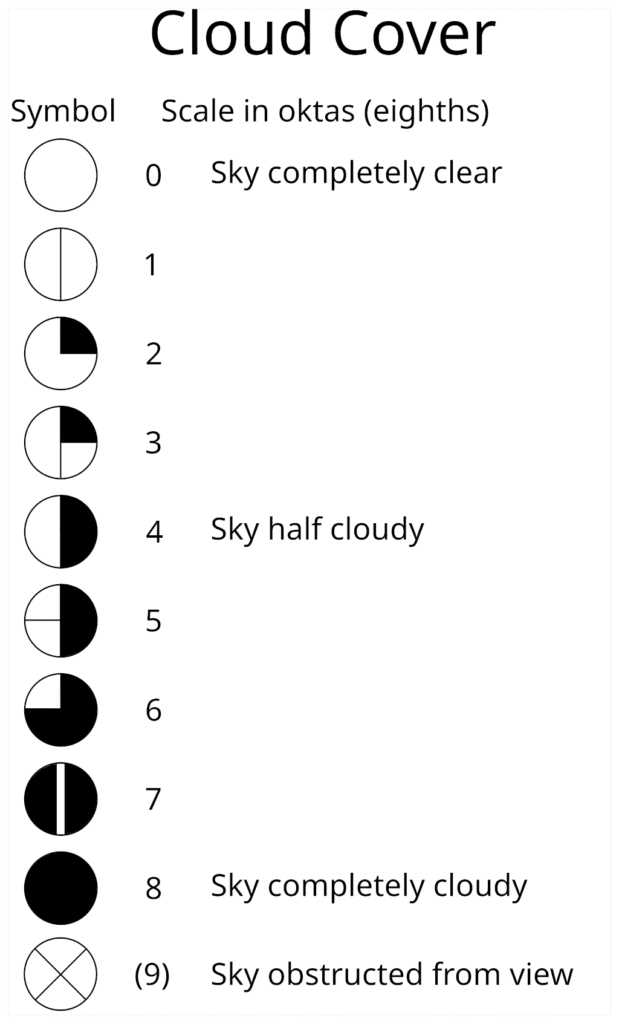
Mostly Clear vs. Partly Cloudy
We love to hate on weatherpeople and their nebulous percentages.
How can they get it so wrong?
As it turns out, meteorologists are increasingly accurate.

Even if we concede that the weather prognosticators have improved, perhaps some of their success comes from vague wording.
For example, what exactly does the forecast on the left in the image below mean?

The forecast on the right – “cloudy” with rain showers – seems straightforward; we can all conjure an accurate vision of how this weather appears.
But what does “partly cloudy” mean? Obviously, it implies partial cloud cover, but how much?
Dissecting weather forecasts reveals a stable of terms that seems to verge on subjectivity:
- Clear/Sunny
- Mostly Clear/Mostly Sunny
- Partly Cloudy/Partly Sunny
- Mostly Cloudy/Considerable Cloudiness
- Cloudy
These terms form a spectrum. At the ends, the nomenclature seems definite: clear/sunny and cloudy. But how do we parse the points between?
As it turns out, this system is based on objectivity, despite the cloudy diction.

Meteorologists measure cloud cover by dividing the sky into oktas, a unit deriving from the Greek root for “eight.” One okta is one-eighth of the sky dome.
If the sky is completely clear, 0 oktas are covered; if clouds totally overtake the sky, 8 oktas are covered. If the sky presents something between 0 and 8, meteorologists estimate the oktas and translate the figure to the parlance we discussed above.
0 oktas = Clear/Sunny
1/8 to 2/8 = Mostly Clear/Partly Sunny
3/8 to 4/8 = Partly Cloudy/Partly Sunny
5/8 to 7/8 = Mostly Cloudy/Considerable Cloudiness
8 oktas = Cloudy
Importantly, this measurement only includes opaque clouds, the ones that block the Sun’s heat from hitting the ground. High, wispy clouds do not do enough to obscure the Sun, so they are omitted when determining okta coverage.
If things are so murky that the sky is completely obstructed – during dense fog, for example – meteorologists can use a rating of 9.
The buckets have two different terms so that the same system can be used during the day or night. Three-eighths coverage at night would garner a “partly cloudy” designation, instead of “partly sunny.”
You can check out some example images of the different okta coverages at this site, provided by the University of British Columbia.

Scientists can use radar or satellite to help them with these designations. The average citizen meteorologist might think cloud coverage could be easily estimated on the ground. In general, this notion is correct, but humans actually cannot see the entirety of the sky’s dome all at once!
To remedy this shortcoming, you can use a sky mirror, otherwise known as a curved or fish-eye mirror. The device shown in the image above can allow you to see all the sky’s clouds at once.
In the palm of your hand, you could estimate oktas with ease. You could confidently declare to family and friends that the sky is, indeed, partly sunny. And, now, you can even tell them exactl what this ambiguous term means!
Further Reading and Exploration
Sky Condition – National Weather Service
Anatomy of a Forecast – National Weather Service
Forecast Terms – National Weather Service
Observing Handbook No. 1 – National Weather Service
Cloud Coverage – University of British Columbia
Make a Sky Mirror to Observe Clouds and Contrails – NASA













